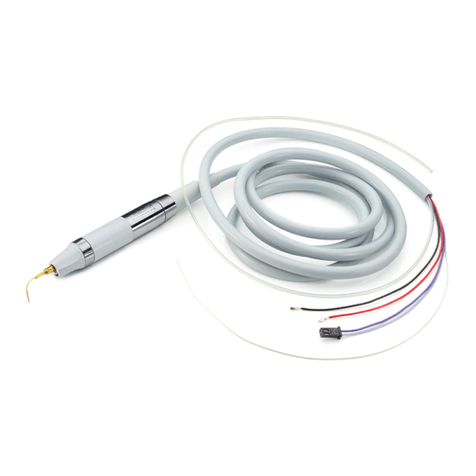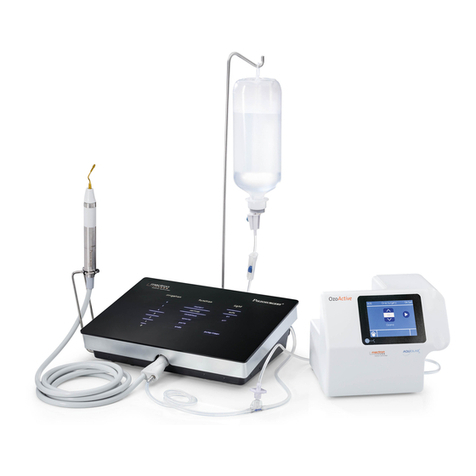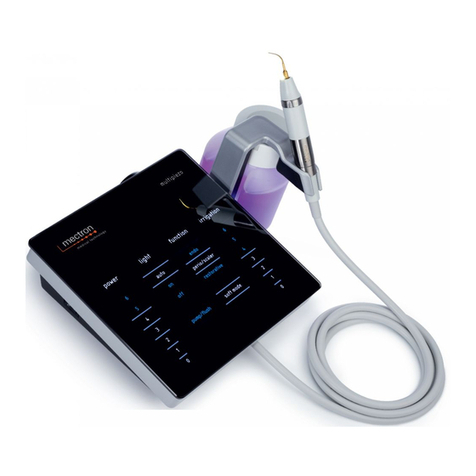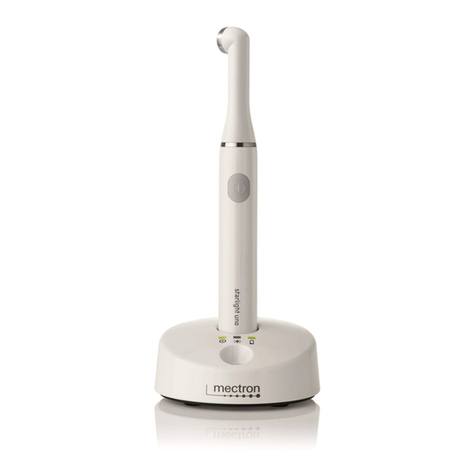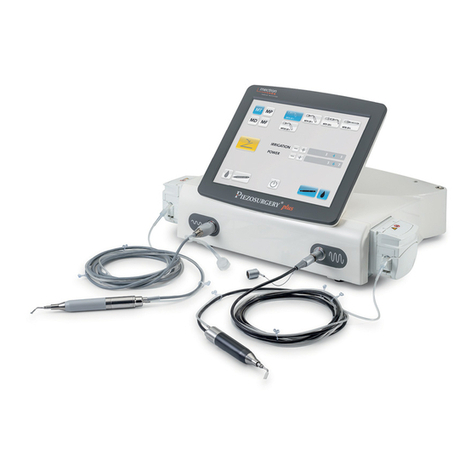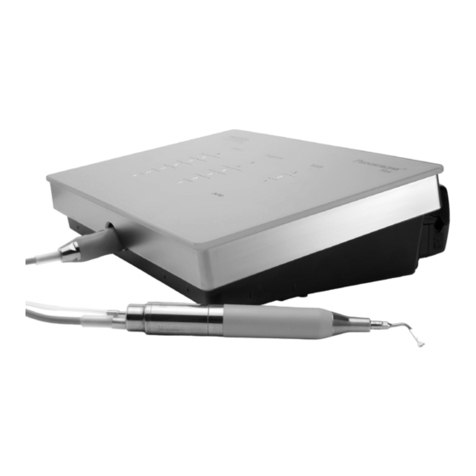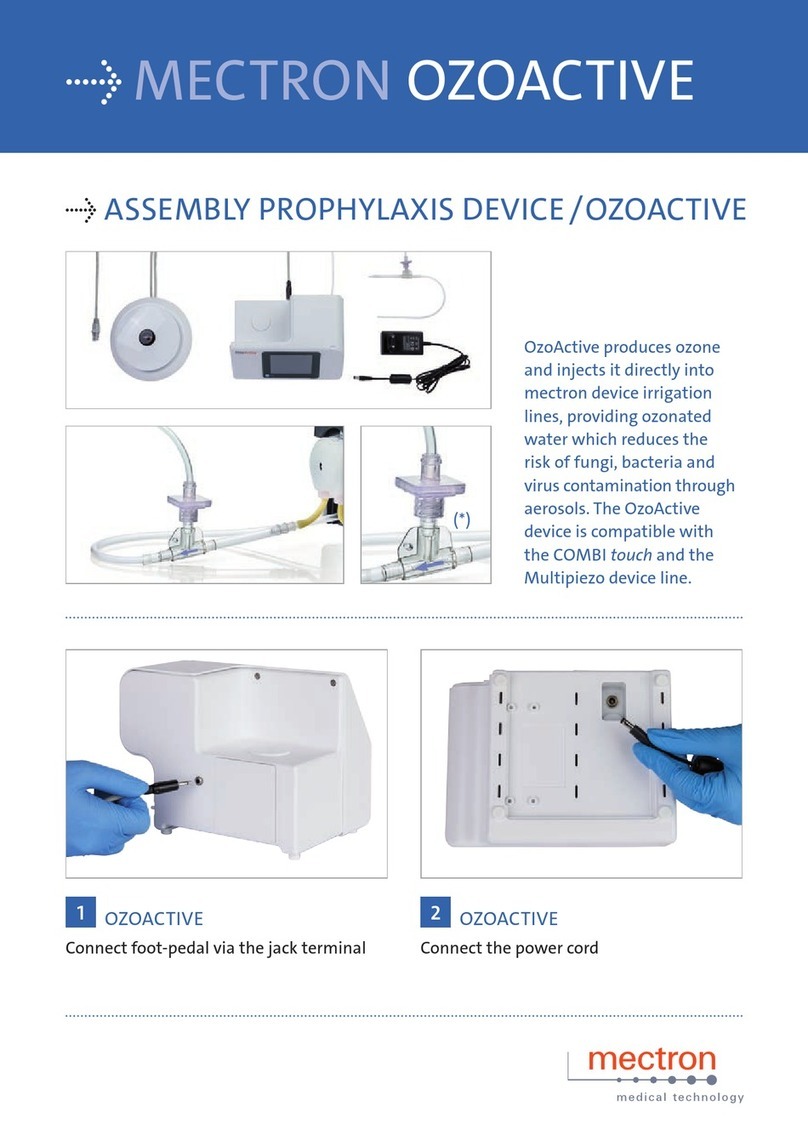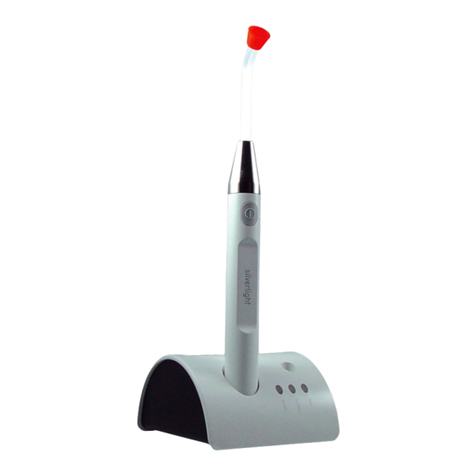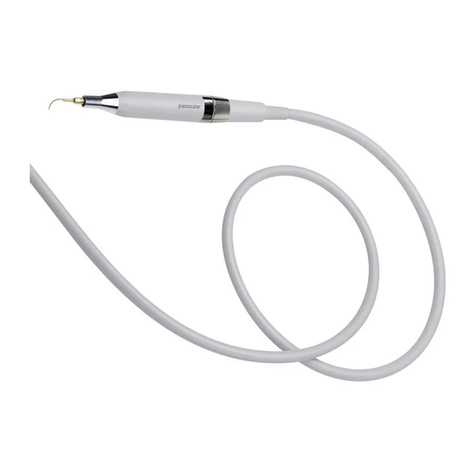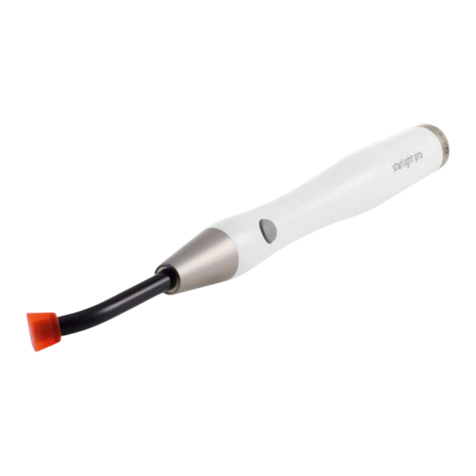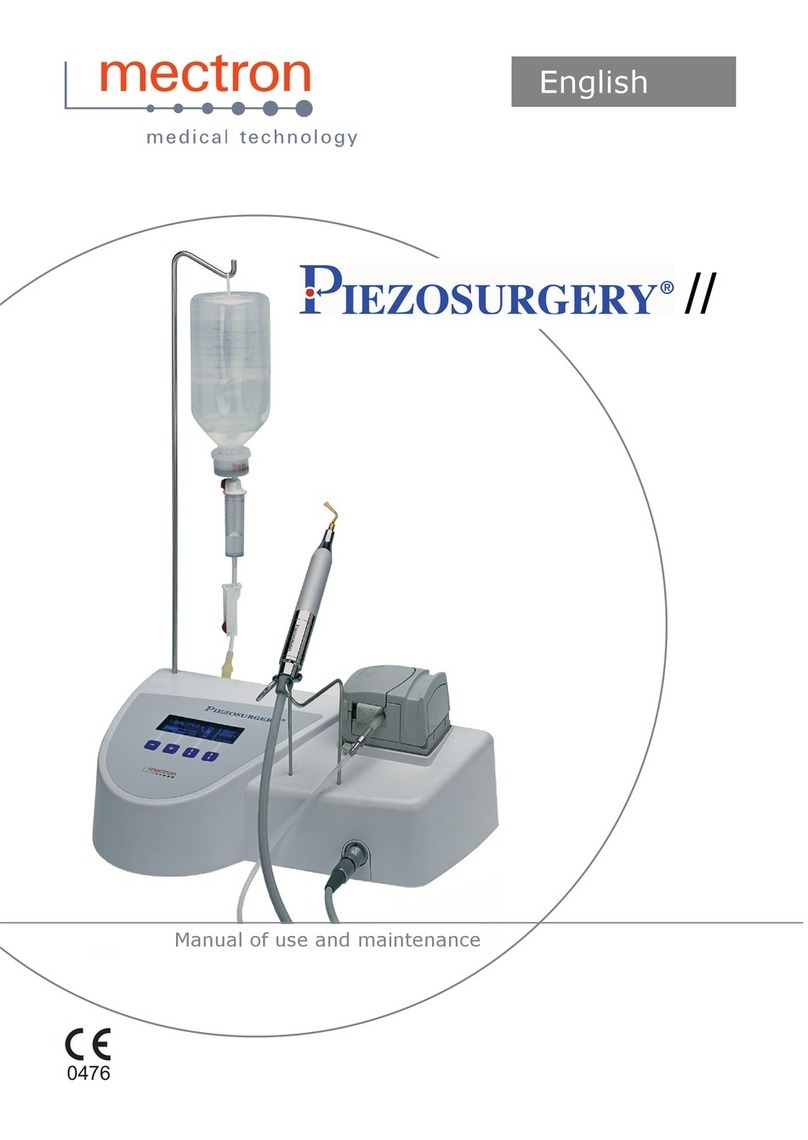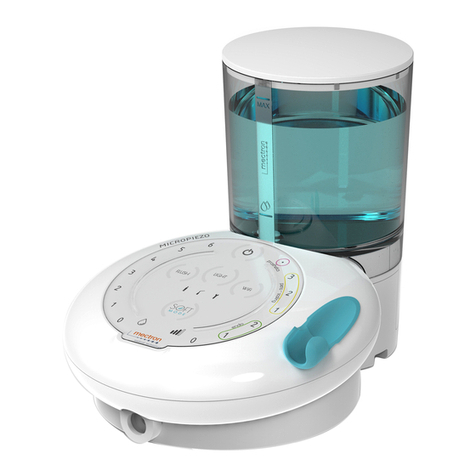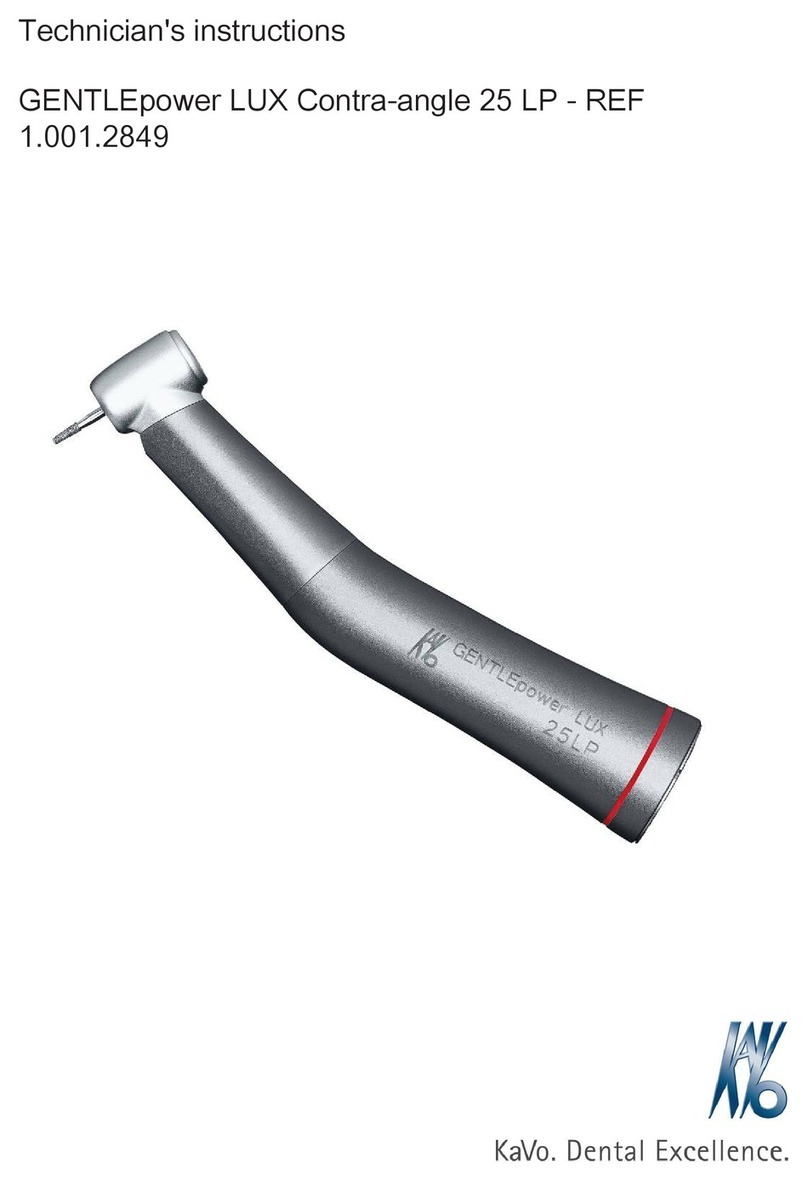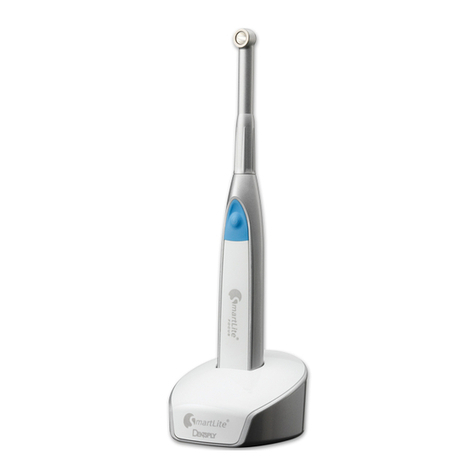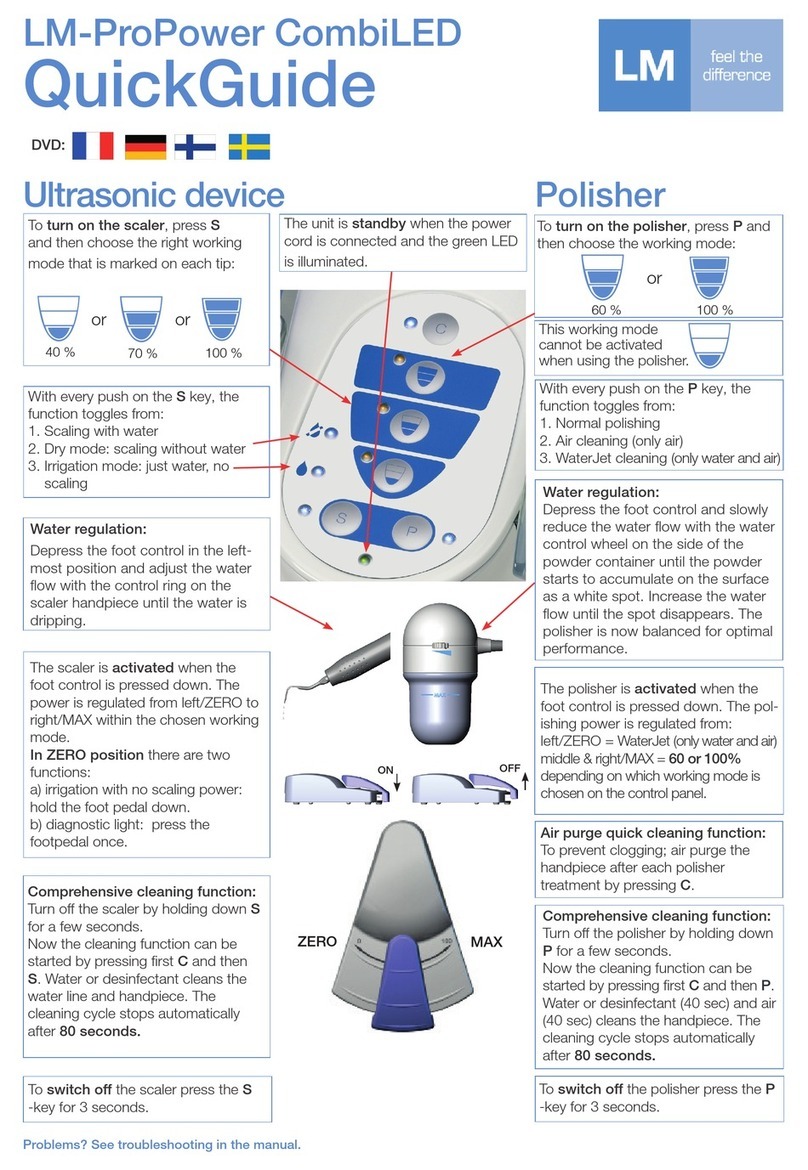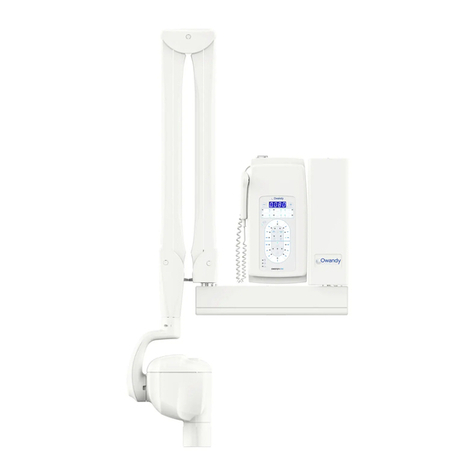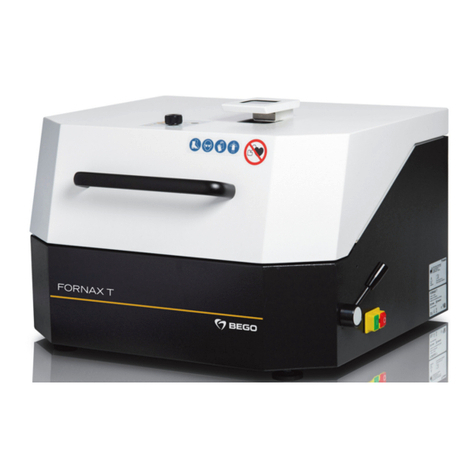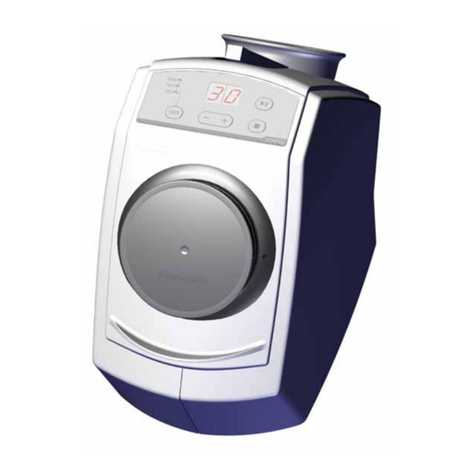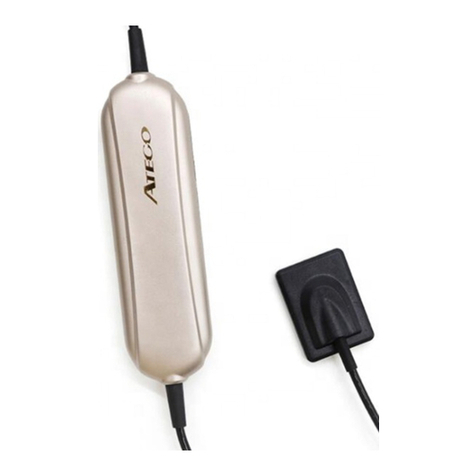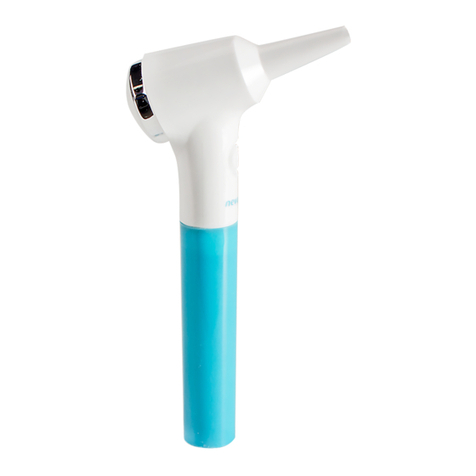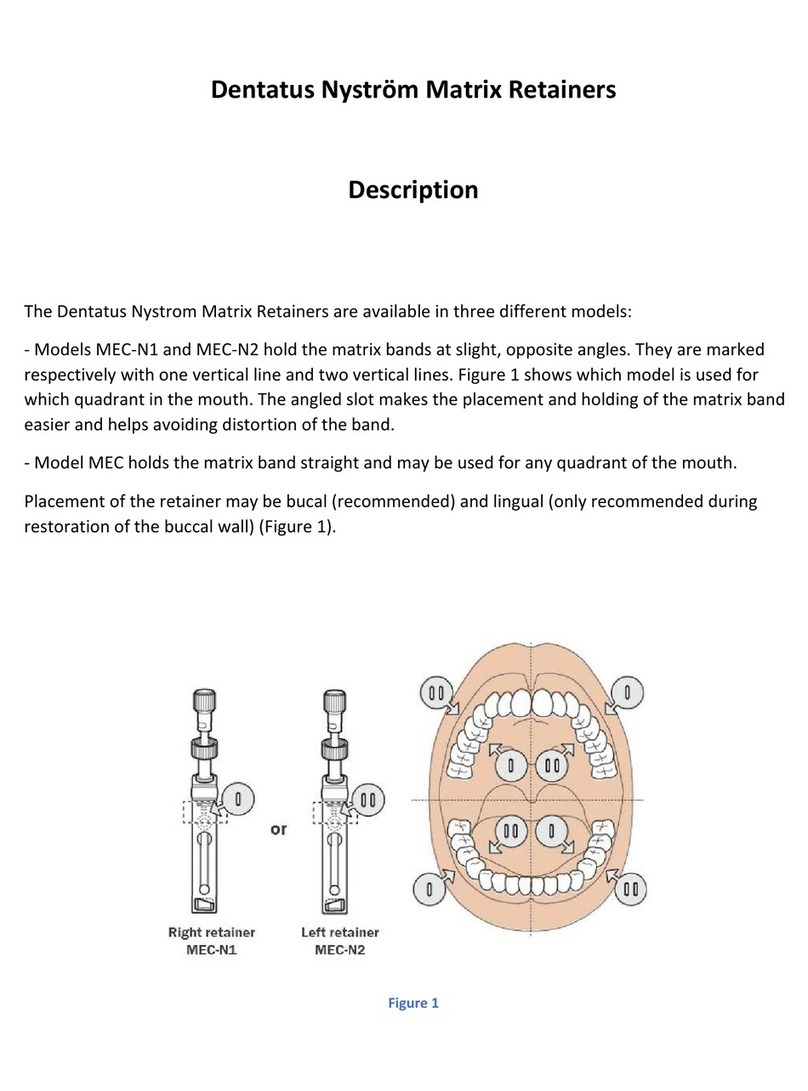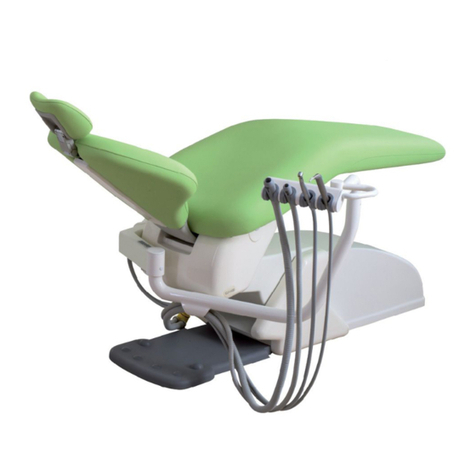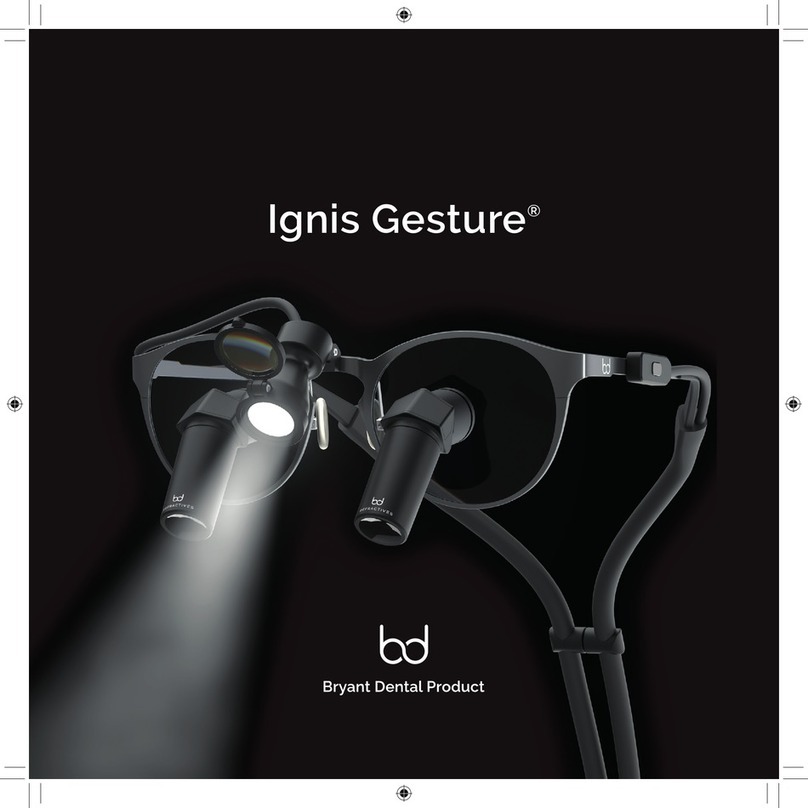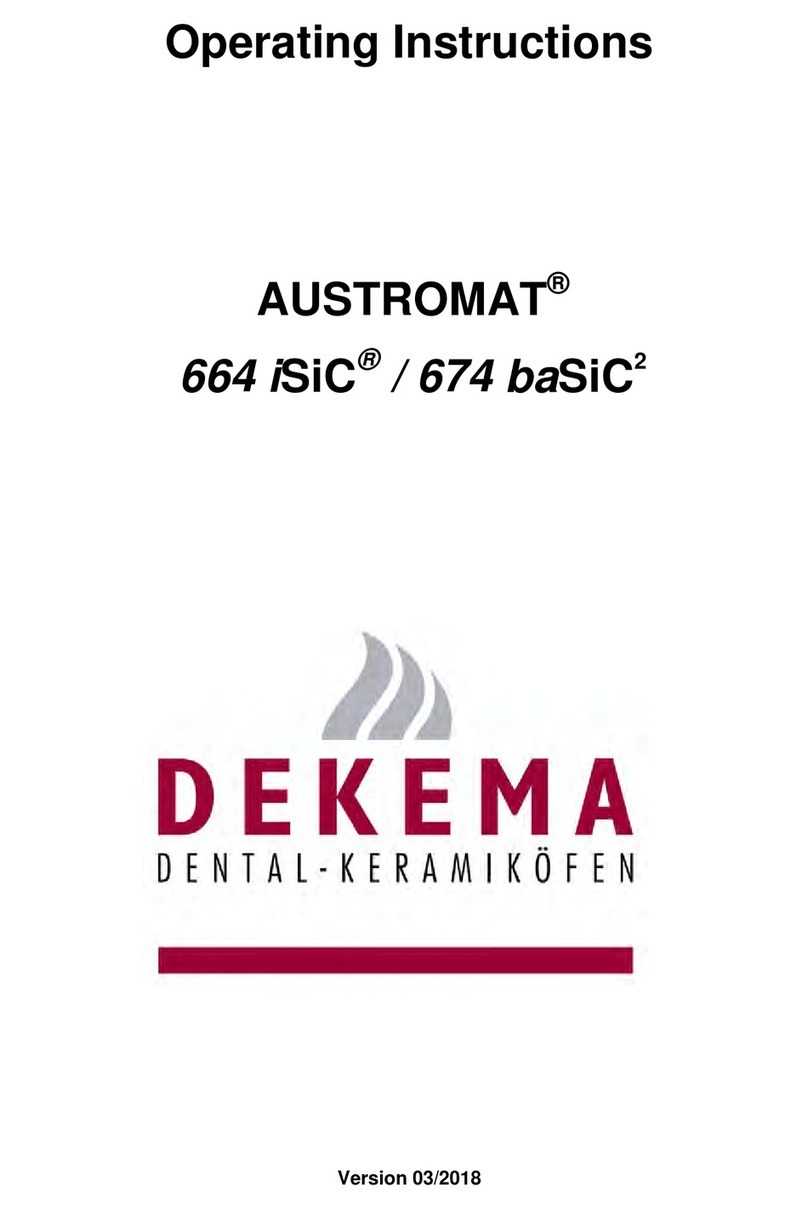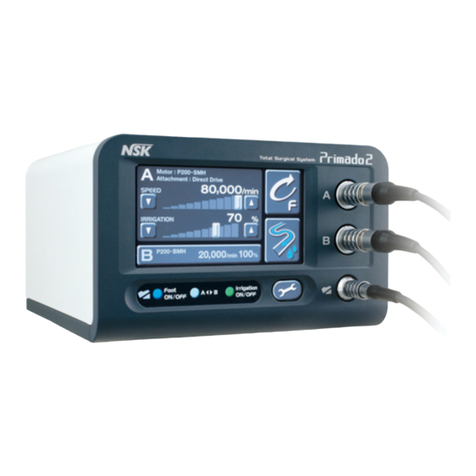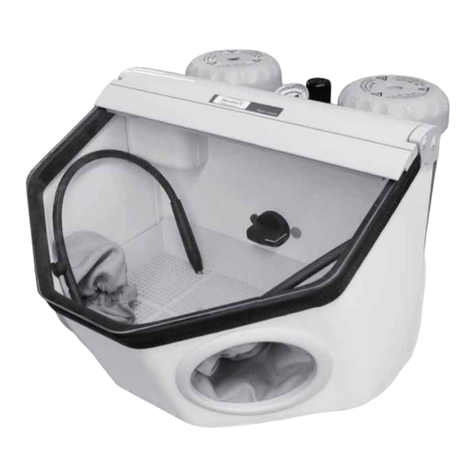10 / 16 Starlight p GB
MANUAL OF UNSE AND MAINTENANCE
04.4 - Instructions of use
1 Check if the scaler is setted with the power at maximum.
2 Check that the Water function is OFF or that the water tap is closed.
3 Press the scaler footswitch.
4 An exposure cycle starts. The device emitts an acoustic signal
every 10 seconds.
4 In the first seconds of exposure, avoid contact between the tip of
the optical fibre and the composite that has not yet polymerised.
5 In order to finish the exposure cycle just release the scaler
footswitch.
NOTE: Deposits of composite material adhering to and polymerised
to the surface of the tip of the optical fibre lower the amount of light
transmitted and will therefore prejudice subsequent polymerisation
operations.
NOTE: Additional exposure cycles.
At the end of each exposure it is possible to carry out other cycles by
pressing each time the scaler footswitch.
04.5 - Safety protection
In the event of extremely heady duty use, with long and repeated
exposure cycles, a thermal protection device is triggered automati-
cally. An acoustic signal (3 beeps) will be heard. This protection de-
vice will temporarily prevent use of the lamp for a few minutes.
05.0 - CLEANING, DISINFECTION, STERILISATION
05.1 - Cleaning and disinfecting the Starlight p
handpiece
DANGER: The handpiece is not protected against the pen-
etration of liquids.
DANGER: Do not spray liquids directly onto its surface or
onto the electric contacts.
DANGER: The handpiece should not be sterilised.
Proceed as follows after each treatment:
1 Remove the optical fibre and optical protection from the hand-
piece.
2 Clean and disinfect the surface of the handpiece using a cloth
moistened with a solution of mild detergent/disinfectant having a
neutral pH (pH = 7). Follow carefully the instructions provided by
the manufacturer of the disinfectant solution. Allow the disinfect-
ant solution to dry in air before using the handpiece again. Above
all, make sure that the electric contacts are completely dry.
NOTE: Water-based disinfectants with a neutral pH are strongly rec-
ommended. Some alcohol-based disinfectant solutions may be harmful
and cause damage to plastic materials.
